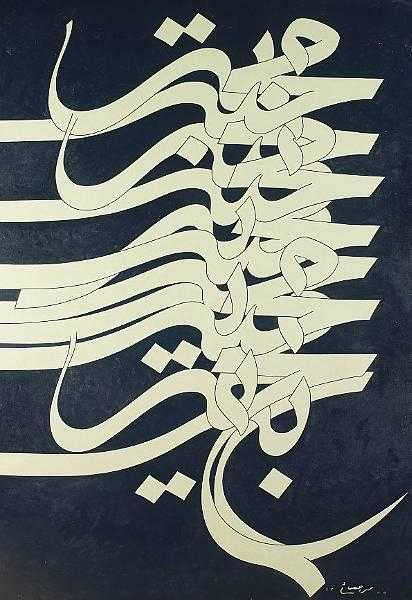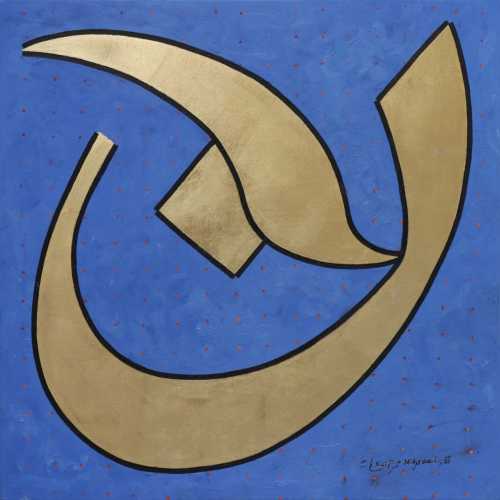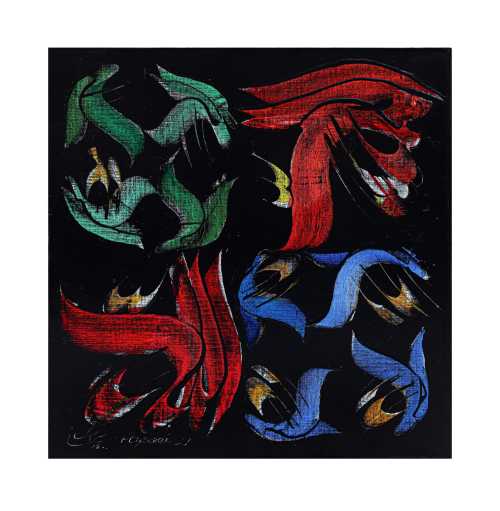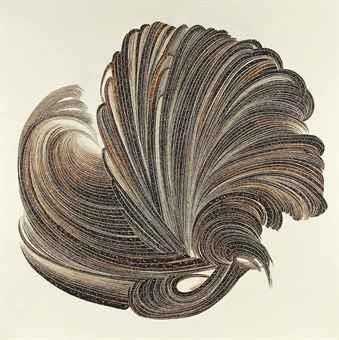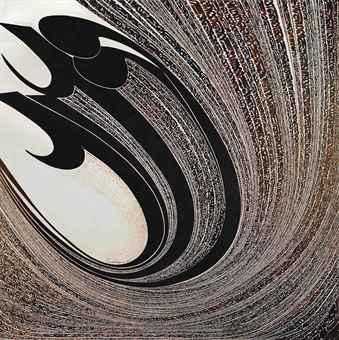- Mohabat 2007
- Oil on canvas
- Painting, Calligraphy Painting
- 175 * 260 cm
- signed and dated '07 in Farsi lower right, framed
Artwork Description
Mohammad Ehsai is undoubtedly one of the most prolific and talented calligraphers of the modern era. Whilst his paintings display a level of technical proficiency on a par with the old masters of the kufic, naskhi and nasta'liq traditions, his depictions are stripped of the superfluous adornments of their older counterparts, giving them a boldness, purity and immediacy which affirms the relevance of calligraphy in a modern context.
In the Middle Eastern tradition, calligraphy has served as a crucial form of both religious and aesthetic expression since the advent of Islam. The use of Arabic script, the language of the Holy Qur'an, together with the beauty of Persian and Arabic letter forms, led to the development of a tradition which served at once as both art and worship. The restrictions in Islamic iconography led artists to channel their aesthetic impulses into calligraphy, embellishing the word of God itself, creating a divinely inspired amalgamation of art and religion.
Ehsai's monumental intertwining script not only contains an aesthetic curvilinear harmony, but in its tremendous intricacy, imitates the unfathomable nature of the divine. Ultimately, Ehsai's contorted letter-forms are not written to be understood, emphasising the ineffability of the deity itself. The word depicted in this painting is a repetition of the Persian "mohabat", meaning kindness, and is not only a quality of the pius man, but a characteristic of the divine. Through constant repetition, Ehsai transforms the written word into an iconic object of veneration, and by leaving his backgrounds barren and black Ehsai reminds us that when faced with the holy, all secondary considerations pale into obscurity.
A true master of his craft, Ehsai's bold, stunning calligraphy is the modern standard-bearer of an artistic tradition spanning one thousand years.
In the Middle Eastern tradition, calligraphy has served as a crucial form of both religious and aesthetic expression since the advent of Islam. The use of Arabic script, the language of the Holy Qur'an, together with the beauty of Persian and Arabic letter forms, led to the development of a tradition which served at once as both art and worship. The restrictions in Islamic iconography led artists to channel their aesthetic impulses into calligraphy, embellishing the word of God itself, creating a divinely inspired amalgamation of art and religion.
Ehsai's monumental intertwining script not only contains an aesthetic curvilinear harmony, but in its tremendous intricacy, imitates the unfathomable nature of the divine. Ultimately, Ehsai's contorted letter-forms are not written to be understood, emphasising the ineffability of the deity itself. The word depicted in this painting is a repetition of the Persian "mohabat", meaning kindness, and is not only a quality of the pius man, but a characteristic of the divine. Through constant repetition, Ehsai transforms the written word into an iconic object of veneration, and by leaving his backgrounds barren and black Ehsai reminds us that when faced with the holy, all secondary considerations pale into obscurity.
A true master of his craft, Ehsai's bold, stunning calligraphy is the modern standard-bearer of an artistic tradition spanning one thousand years.
More lots by Mohammad Ehsai
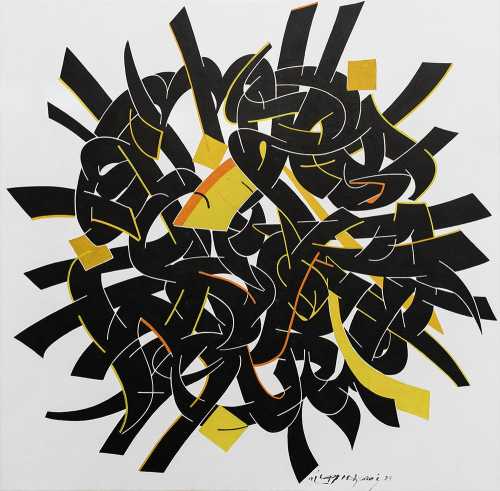
The Autumn of Sunflower
Estimation
20,000,000,000﷼
40,000 USD
-
30,000,000,000﷼
60,000 USD
Realized Price
41,800,000,000﷼
83,600 USD
67.2%
Sale Date
Tehran
-
12 December 2023
Realized Price
122,038 USD
Min Estimate
72,125 USD
Max Estimate
101,716 USD
Average Artwork Worth
+62.555%
Average Growth of Artwork Worth
Sales Performance Against Estimates
Average & Median Sold Lot Value
2021 - 2025
Performance vs. Estimate
2021 - 2025
Sell-through Rate
2021 - 2025
